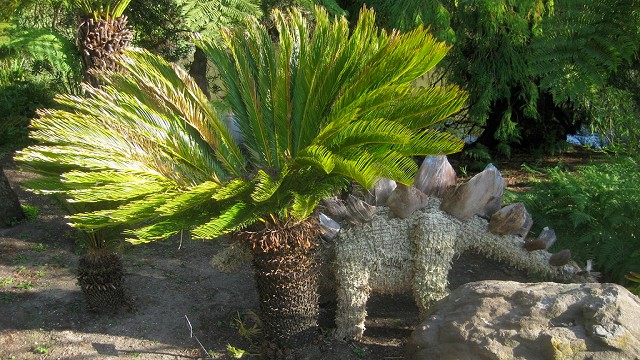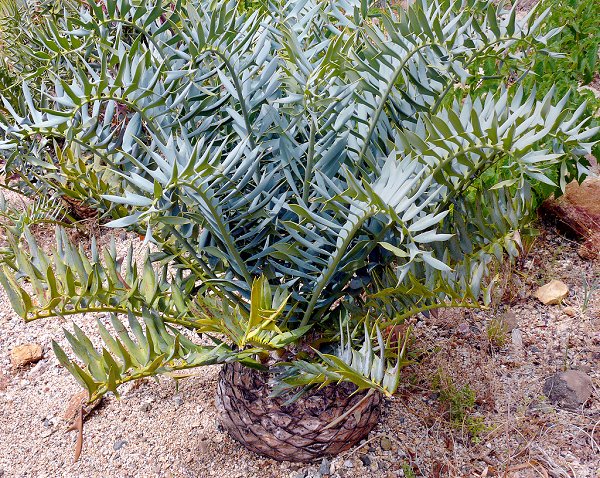"Living fossil" is a term for species alive today that have been unchanged for millions of years. Among the animals, the horseshoe crab is considered a classic example, looking just like its remotest ancestor from early Paleozoic times.
Among the plants, people often cite the cycads: a line of fernlike, cone-bearing shrubs that have looked the same since the Permian Period nearly 300 million years ago. Their heyday was in the Jurassic, but today they have dwindled to about 300 species in 11 genera, still with the same old looks and lifestyle. However, in a new paper just published in Science Express, a team led by UC Berkeley paleobotanist Nathalie Nagalingum used genetic methods to show that nearly all of today's cycad species are actually quite young.
Nagalingum, whose team included five other plant specialists, tested two independent gene lines in 199 different cycad species to estimate the speed and timing of their evolution. They also used fossil cycads to calibrate the genetic results, yielding a pair of "timetrees" of cycad evolution. The timetrees show just six slender stems, representing ancestral cycad lineages, that extend from the deeper past beyond the end of the Mesozoic Era (and the dinosaurs) 65 million years ago. The stems burst into thick bundles of twigs, like the explosion of skyrockets, much later in geologic time.
This news overturns a favorite theory that today's cycad species inherit their characteristics from evolutionary pressures during the days when dinosaurs browsed upon them. Today's species instead arose in the late Miocene, about 10 to 5 million years ago. Nagalingum's team surmises that the reason was rearrangements of the continents that interrupted tropical ocean currents, causing the world to have stronger seasons. Even though the cycads responded to this change with a burst of speciation, two-thirds of existing cycad species are nevertheless on the IUCN Red List of Threatened Species. They don't have good tools to thrive in today's colder, drier world. Call them victims of plate tectonics.


